Valemount Residents Discuss Mica Dam
Columbia River Basin
|
NEW ESRI StoryMaps: What's On Our Shelves & NWNL Song Library & No Water No Life ESRI |
Columbia River Basin
Jean & Alec Osadchuk
Residents
Bill & Joan Kruisselbrink
Residents
Kathy & Bob Beeson
Residents
Louise Maclean & son Donnie
Residents
Bob Griffin
Resident
Rhondi Hurlbut
Resident
Kim & Tore Thorn
Residents
Linda Hicks
Residents
Andru McCracken
Editor, Robson Valley Times
Alison M. Jones
NWNL Director and Photographer
Robin MacEwan
Environmental Resource Mgr.
Fritha Pengelly
Videographer
NWNL met with a group of residents to hear how lives were changed by the 800-foot-high Mica Dam built in 1973. At “full pool,” this dam covers 106,000 acres. Their land was taken against their wishes with unfair compensation. An ongoing concern expressed by this community group is the loss of the recreational opportunities they had before the dam. In the dam’s first 15 years, more concerns regarding BC Hydro operations arose. Early on, they could walk across the flooded Kinbasket Lake atop cut timber floating on the surface, despite a BC Hydro’s initial agreement to remove all cut lumber. These residents mourn the loss of their land, which they consider “the most productive timber-growing land” in the region. For them it is now just “wasteland.”
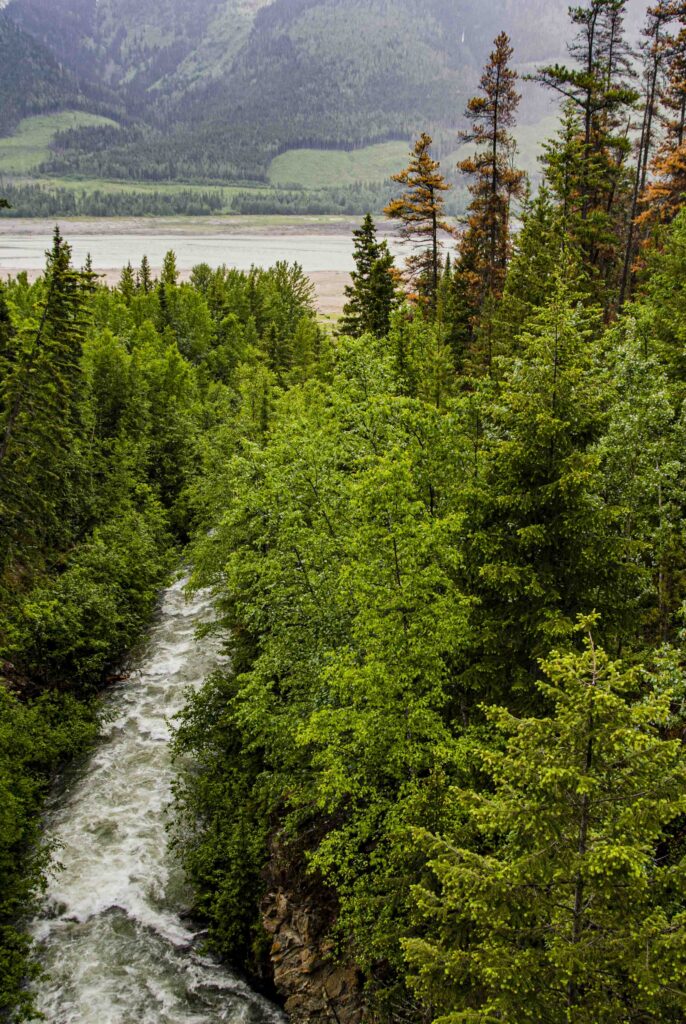
REACTIONS TO BC HYDRO’s ROLE
LESS FISHING & SMALLER FISH
HAUNTED BY DECEPTION
GONE: MUSKEG for WILDLIFE & HOT SPRINGS
USING CHILDREN – USURPING LAWYERS
BOB’S PRE-DAM MEMORIES
PROMISES BROKEN
GROUP EXCHANGE on VALEMOUNT’S FUTURE
For this valley, this reservoir is broken promises. It is a wasteland that destroys the air quality and is usable only 3 months each year. This valley and its wildlife have sacrificed much to provide bottled water and electricity for other parts of the world. – Donnie MacLean
All images © Alison M. Jones, unless otherwise noted. All rights reserved.
NWNL Kinbasket Lake, formed by Mica Dam in 1973 has two reaches: the Columbia Reach and Canoe Reach. As we sit here today on the dusty banks of Canoe Reach, what are your major concerns regarding the creation of this Kinbasket Reservoir and Dam….
BOB GRIFFEN My concern is about B.C. Hydro. Regarding my own family, they bought 37 acres from us at $20 an acre. Because the high-water level didn’t get that far up, we tried to buy it back; but they wanted 4 times the price they paid. We wouldn’t buy it. So, we leased it back from them.
As for the valley today, the lake is beautiful. But BC Hydro should live up to some of their obligations, like cleaning up their sites along here. Maybe they could make a weir dam down the lake a little bit [at kilometer 28] so we could always have water here. That would be great.
They ruined a beautiful valley. Before they came, we could come down here and count 20-30 moose in a bunch. We don’t see that anymore.
NWNL Do you have children?
BOB GRIFFEN Yes. I have two boys.
NWNL How do they feel about these changes?
BOB GRIFFEN Well, they like the fishing. But they feel the same as I do about Hydro BC. They don’t like they’re doing with what was our land, or the way they treat us. I think they were wrong by doing that. They should give our land back to us at the same price for what they bought it.
NWNL Do you or your children have ideas on what could be done, or what you as an individual could do to have a voice? What memories do you have of when you were younger? Or what this looked like? Or what you did? What experiences did you have as a child in this area?
BOB GRIFFEN It’s great hunting and fishing area down here, but today the hunting is no good, while the fishing is super. What’s bad is when they let the water go and a big wind comes up, creating nothing but dust storms headed towards Valemount. We can see it for miles. When the silt is flying in the air it’s not nice.
NWNL Does that affect your health or that of your neighbors?
BOB GRIFFEN Well, it doesn’t affect us, but the people on the ridge up there get it.
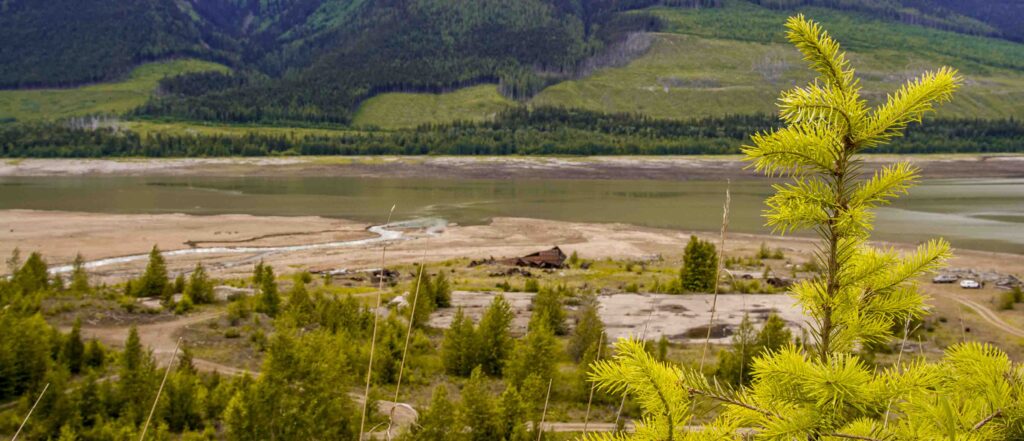
NWNL Do others of you have any memories to share, perhaps from when you were younger? What activities did you enjoy and how did you use this valley? What are your children doing here now? Do they use the lake?
BOB GRIFFEN The only thing we use the lake for is fishing.
NWNL How many months a year is there water in this part of the lake?
BOB GRIFFEN Usually it’s at the end of June that we can start using the lake and put in our boats. By the end of September, that’s ended. All in all, we only get 3 months to fish. That’s it. That window’s not great. As Bob says, the rest of the time it’s an empty dust bowl full of grit and silica sand. It’s just terrible.
All BC Hydro needs to do is build a little weir dam across here to hold in some water. They were going to put it about 28 km from here. I think it’d work well if they did.
NWNL Is there any active movement from the community to pursue this at this point?
BOB GRIFFEN The Marina Association was sort of talking about putting it in. They got a pretty good club started. I don’t think the village is doing anything about it.
NWNL Has the fishing here changed since the dam?
BOB BEESON When it was first flooded, the fishing was good and there were many 5-pound rainbows. But since there’s so much algae up and down the lake now, the fish have gotten smaller. They say that if water level was higher all the different fish species here would grow bigger. But instead, they are smaller in size.
NWNL What species of fish do you catch in here now?
BOB BEESON Five-pound rainbows kokanees, dollies and white fish. We used to have a great run here of steelheads [a trout species], but now they can’t come through the dam to spawn. So, the dam hasn’t done us much good.
Also, when they flooded this reservoir, they chopped down [the forest], wasting millions and millions of feet of lumber. The lumber was just left to rot and burn.
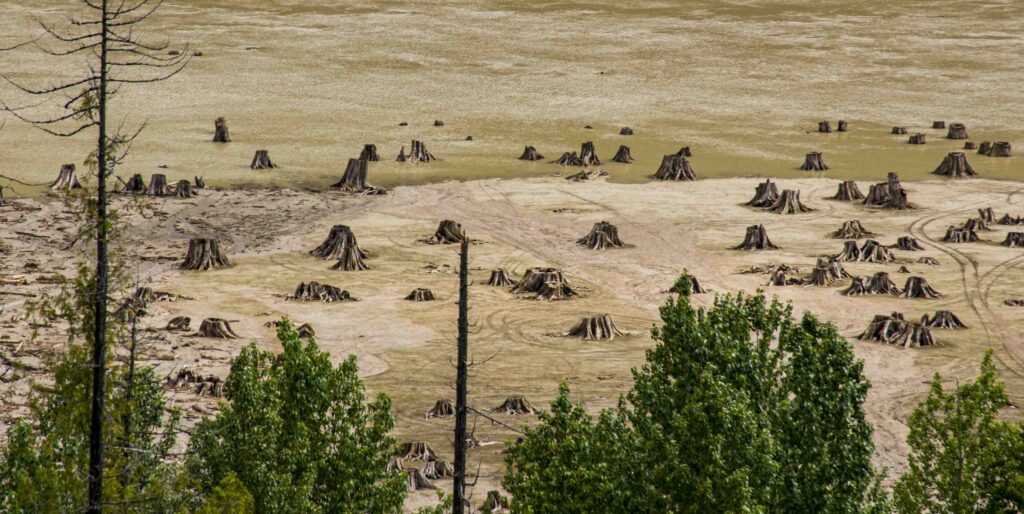
KATHY BEESON For all who’ve been here through this change, the greatest sense of all is how we were lied to and deceived by BC Hydro. The politicians [Ray Williston, et. al.] came to town with conceptual drawings of a beautiful lake with summer home colonies, sailboats, swimming, water skiing…. It was going to be “a wonderful opportunity for this valley to have a huge lake all of us to enjoy all the time.”
But instead, people’s land was expropriated from them for less than market value, against their wishes. As Bob said, some of the land they took wasn’t even needed. Jean and Alec Osadchuk’s land was taken against their wishes. They weren’t fairly compensated for it,nor it was never given back. The best productive timber-growing land in the whole area is now wasteland.
DONNIE MACLEAN For this valley, this reservoir is broken promises. It ruined the economics of the valley, because when our best timber-producing land was gone, we could no longer profit from this land. This lake won’t draw tourists. It is now a wasteland that destroys the air quality and is usable for only 3 months each year. This valley and its wildlife have sacrificed much to provide bottled water and electricity for other parts of the world.
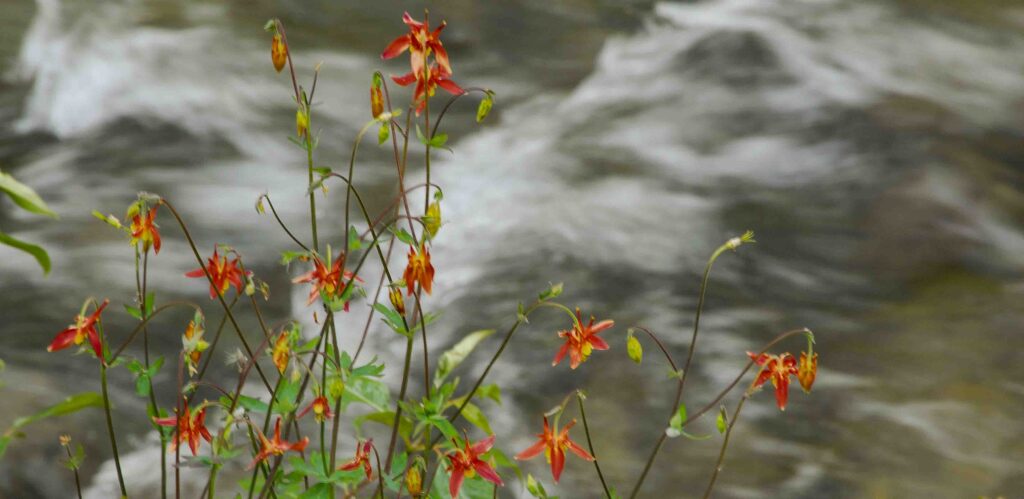
DONNIE MACLEAN As Bob said, moose and other wildlife used to be here all winter, because there’s less snow here now. So, they need to go to the hills; but they can’t paw in four-foot snowdrifts up there. Before the dam, they stayed in the muskeg bottomland that was here. [Muskeg is an Ojibwe term for northern bottomlands of peat and other vegetation that covers 12% of Canada, per the Canadian Encyclopedia.]
That swampy bog held plenty of food, bird life and insects of all kinds – but that has all disappeared. As well, the climate is changing here from snow to rain. Precipitation before the dam and this new lake winter precipitation was 60% snow and 40% rain. Now it’s the other way around.
Plus, they went the wrong way about cleaning this lake. They just fell all the trees and other vegetation and then left the logs. When the water first came up, we could walk across this lake on the logs they left. We have pictures of when we could walk across this lake. When we went fishing, the wind would come up; we’d get stuck in the middle; and then we had to drag our boats across the logs to shore. That’s how bad it was.
Beautiful hot springs used to exist about 25 km from where we are sitting now. We used frequently go and use a nice cabin there with a tub that some trapper made. We’d go for weekends and enjoy a nice little lake there, full of fish. We take dips in the hot tub and enjoy both cold and very hot running water and very hot running water. Now when the water goes down low enough, the hot springs are still there but they are all in mud.
But we sold off the rights to those too. We didn’t have any choice.
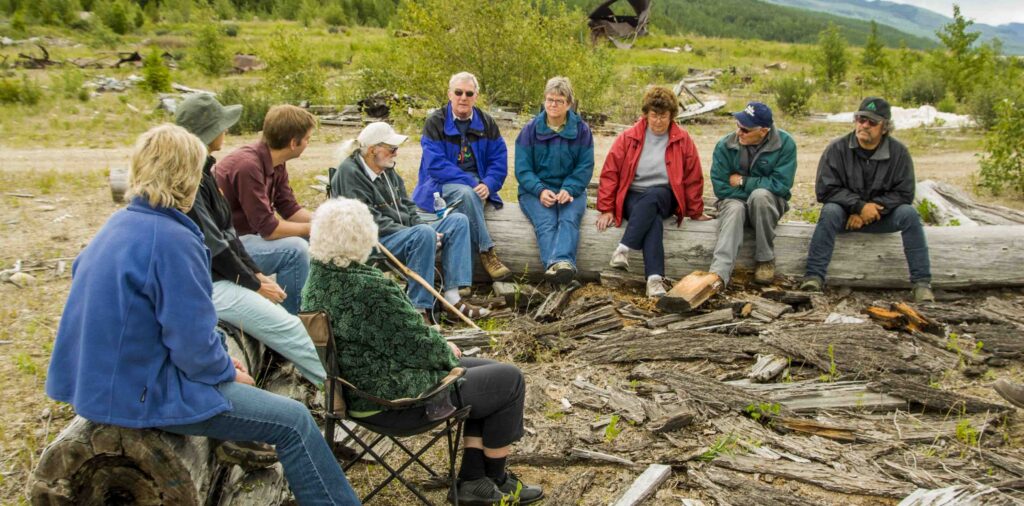
DONNIE MACLEAN When they first came, they brought candies that they gave to our children to work their way in to our community – the modern version of “beads for the children.” Then they came back a couple days later. But we couldn’t argue with them. They prolonged it for a while and then they just did what they wanted to.
When they expropriated our property, we responded that we’d get a lawyer to fight it. They said, “Well, there’s not much use, because we’ve got 10 lawyers, and you’ll only have one. So, you can’t win.”
NWNL Donnie, that is a very sad tale. Alec, how long have you and Jean lived in this valley and how much of your land did BC take over?
ALEC OSADCHUK Jean was born and raised here, and I came here in 1948. Then BC Hydro took over 300 acres. Only part of it was flooded. They did sell the land back to us, but kept the rights to it. We pay the taxes. I don’t know how you figure that.
NWNL Do you now live on that land?
ALEC OSADCHUK No. We raise cattle, so that land is their pastureland.
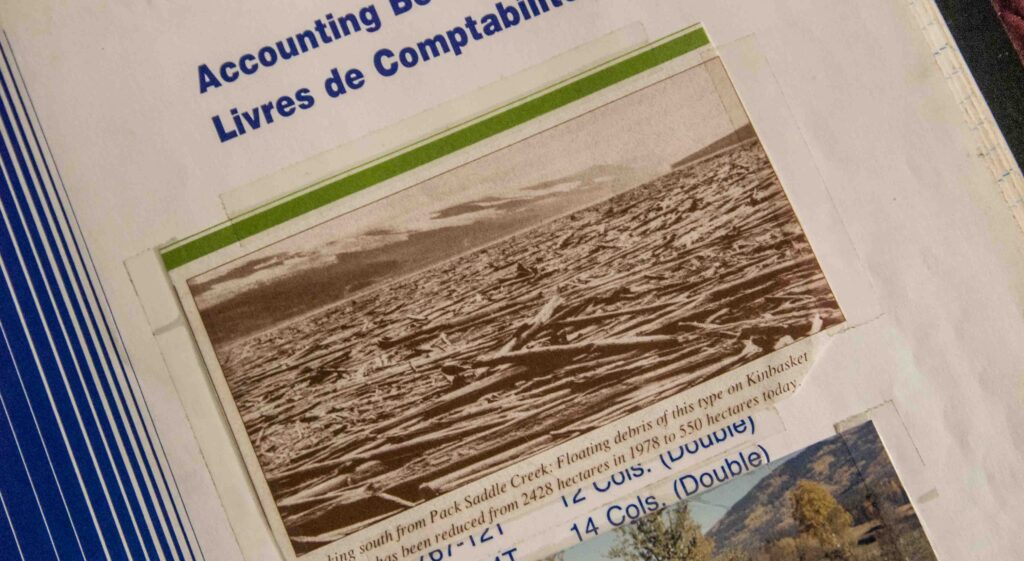
NWNL Jean, what were your memories as a child in this area?
JEAN OSADCHUK Where we lived was a stopping place for the trappers returning in the spring. This area right here was a great trapping area; and there also were always some who were trying to find gold in the backlands. They’d go up in the fall with big packs; and in the spring they’d come down with all their pelts.
One spring, when I was a little girl, my aunt and my uncle returned and said, “Oh, we have something to show you.” I couldn’t imagine what it would be in their packsack. It was a baby that she had somewhere in one of these cabins here. Often a husband and wife would go spend the winter trapping. One lady would say “Oh, man, my hips are getting wide.” When she came back in the spring, she had no hips because trapping is all walking. She got her exercise!
George Corsbick used to trap in Wood River. His daughter said one Christmas, he never came home even though he always came back for Christmas. Her mum was so upset that they only had peanut butter and jelly sandwiches for Christmas dinner. He was a week late because of snow conditions. In those days, if somebody didn’t come home for a week, there were no helicopters, no 4-wheelers, or no way to go looking. You just had to wait till Spring if they didn’t come home. It was quite a different life then.
There used to be a trail all the way to Golden. And we used to drive from Valemount to Mica and Golden before this was flooded. Now we can’t.
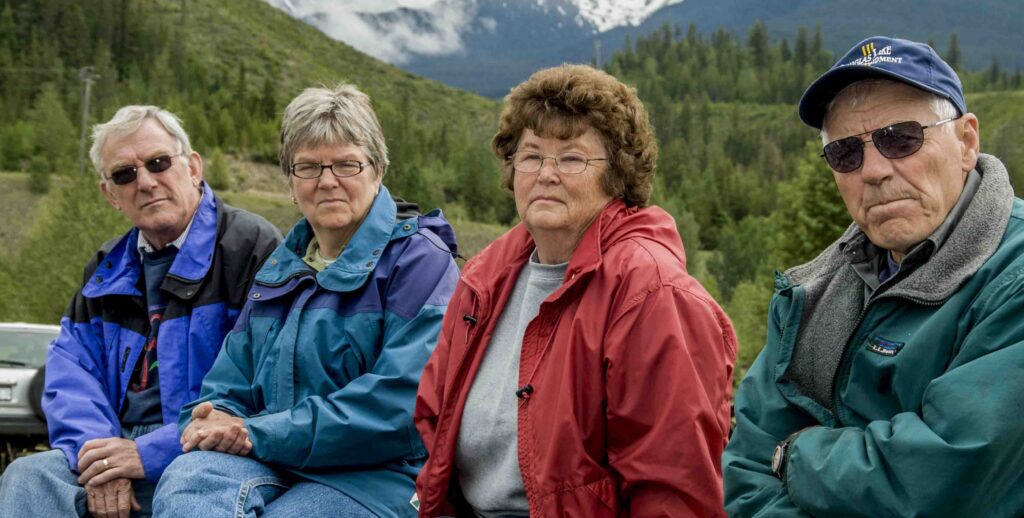
NWNL Bob, you said you have some old history for us….
BOB In 1909, my father came up by canoe to look at these mountains and spent the winter at the mouth of Horse Creek, about 5 miles from here on the northern end of Kinbasket Lake. The snow got deep in the spring, so he walked out as far as Tete Jaune where they were building sawmills, since the railway was about 10 miles away. Then he and his dog went to work for sawmills on the Fraser River where met Van Gordon. She was at Crooked Creek and was the first person he saw when he walked out. Since she loved the dog, he gave the dog to her.
I worked right here at Valemount for the de-watering deal where the tugboat used to bring logs in here that were gathered after they flooded it for the dam. My job was to sit up in a tower there as they brought the logs up so I could scale, mark and grade them when they went to the mill. That was the heyday of the mill – just before it went broke. Well, it broke three times! There might have been a couple of sawmills here in the valley when they were cleaning it.
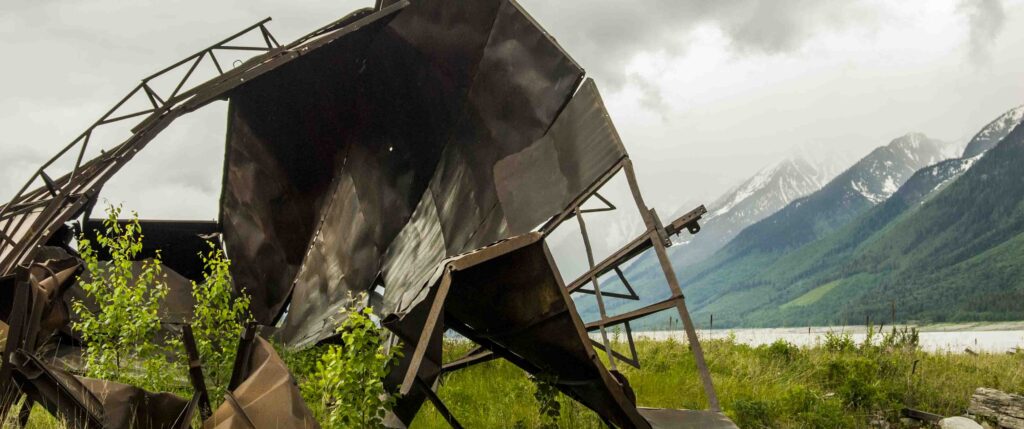
NWNL What’s your favorite story of this valley?
BOB I have some good memories of the valley before they logged … I remember hiking all of those valleys over there. They were pretty tough walking. It took a whole day to look over the nice fir up there. My son’s taken over logging since, where you see all those bare spots there. He can be blamed for that. In the old days there was no road on the other side of the lake. You had to come to this side, go across the river and then walk in.
In the later years after I quit sawing, I had a Caterpillar grader I used to keep the snow off the farthest parts of the road, down as far as twenty-some miles. I did most of these sites up above where they were logging; and I maintained the road then after I quit logging. But I haven’t done much the last few years.
NWNL Mum, do you remember Hydro’s promises and who made them?
LOUISE MACLEAN, aka MUM Oh yes. We had meetings in the community hall with their lawyer Ray Williston, who was our MLA [Member of the Legislative Assembly] was there. We were quite sure that we’d have a nice summer cottage down here with sandy beaches and a lovely lake, year-round. We were promised heaven on earth around this wonderful lake. We didn’t know it would be a “dust bowl” for 8 months of the year. Nobody could imagine all those logs would be on the lake in time and the dangers they posed – nor how far it would draw down each year. We just dreamed about wonderful beaches, places to swim and boat, and more.
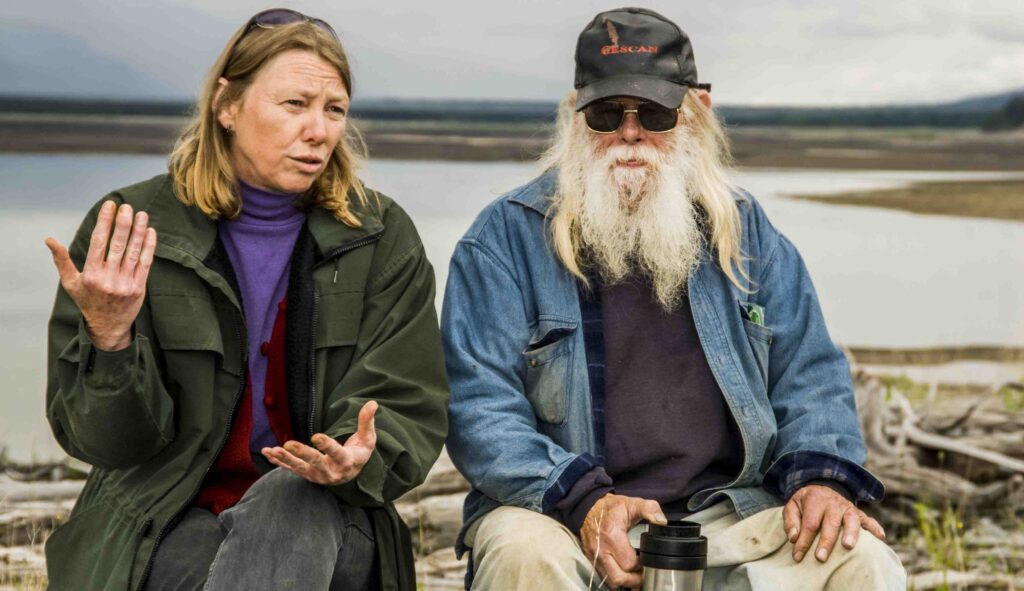
In those days, they referred to it as a lake. But as soon as the water started drying up, they couldn’t refer to it as a lake. It was a reservoir – despite initial claims it would be a lake. Tore was saying yesterday that they promised a road down to Mica, which never materialized. I think he also said free power was also supposed to be part of the package that never materialized.
And I do remember all the waste. When they first started to clean it, I think they dumped 1,000,000 feet of fir log booms. The water came up and scattered all these logs all over the lake. They piled all the log booms in with all the rest of the green fir and wouldn’t let anybody take them out because they didn’t want anybody tearing their piles apart.
Oh, we had little mills going and sawed a lot out of this lake for quite a few years. We had our mill all ready and set. Canyon Creek had the rights to all the wood for the first 3 years and nobody could touch in. We tried to get in there to saw, but they wouldn’t let us during that 3-year period. Canyon Creek got the “saw rights” to that map for three years. Nobody else could touch it. Then we got in at the tail end of it, when they let everybody go out there and gather it.
I wonder how much wood is still in the water. I know people are breaking two and three propellers a year on the lake. You couldn’t get into the marina lots of times. It’s gotten a lot better now. It’s better. But still, they could do more. There’s no reason for any of this. If you get a high-water flood, it would all come back out.
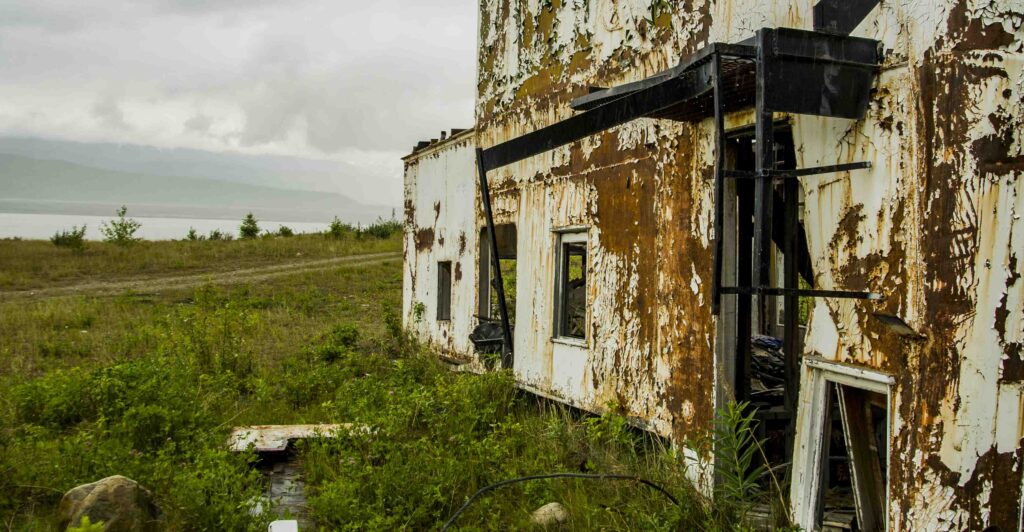
NWNL What was your job when you came here? What did they tell you you’d be doing to clean up the lake?
UNIDENTIFIED RESIDENT First, we were going to get a clear shipping channel. We weren’t going to clear the whole lake. The maps we came with had this shipping channel on them. But they were having real trouble at Lake Williston at that time and decided at the last minute that, “No, Kinbasket must be completely cleared.” That changed everything. Then we had Caterpillar tractors come down here.
It was a last-minute, in-a hurry-to-get-‘er down deforestation effort. “Get ‘er down” because the water would be up in two years. There were many plans made when they were going to clean the lake out. Somebody would make a plan and they would start it. They’d wash it out and another guy would have another one.
I can remember 5 or 6 plans for cleaning the lake that fell through – and then another one.
When the lake was full of log, I was here logging and wanted a chance to get some of them. But they said, “No. No, no we’re gonna have a big outfit that’s gonna salvage everything.” They put in a brand-new burner, but they never used it. They started it once; it went down; and was then never used. I don’t know how much they spent on it.
They were going to do a wonderful job of taking all that out and salvaging it…. They never salvaged 1 foot out of 11 million feet of lumber laying in the lake. That was somebody’s plan; then it was changed; then another guy had a plan; and then it was changed. They were listening to everybody who came out of the woodwork for the plan. It would sound good to somebody, and they’d put a fair amount of money in it.
Theoretically, there are trees under the water. They did underwater logging down at the lower end for a while. What’s the quality of those trees now? Are they still good? Have they been preserved by the water? There’s no air there.
What’s going to happen to this lake as it keeps silting in all the time? Eventually it is going to silt in.
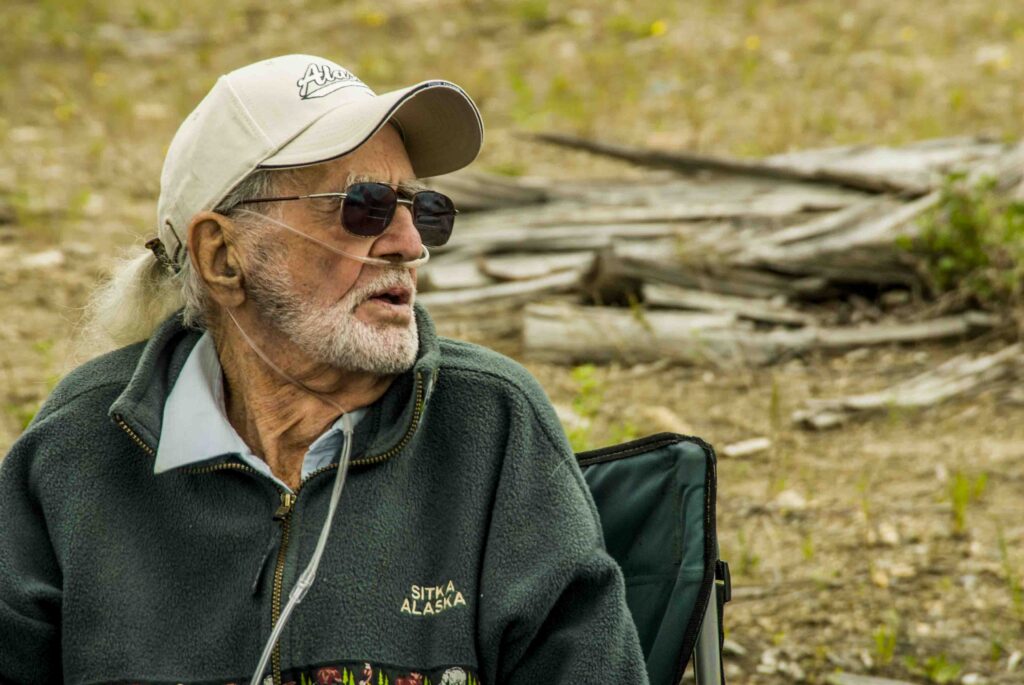
NWNL The big question, given those you’ve just asked in the last 3 or 4 minutes, is what your questions are for today, given your memories, knowledge and what would you like to see addressed. What is your message, your voice of concern for this reservoir, or others similar to Kinbasket, considering the commonalities you have with other groups facing similar problems?
RESIDENT One thing is they should clean this mess up here. I think a lot of these younger folks are going to be living here for a while. Should they have to look at this all the time?
NWNL How do today’s younger residents feel about this? Are they concerned? Do they want it to be cleaned up?
RESIDENT Yes. Many of younger people are concerned. They’d like to see something better to look at than this. There are some beautiful spots along this lake. Beautiful spots.
RESIDENT But the whole trouble is it doesn’t flood to full capacity every year. We look at this dried up land more than we should. The lake is never up to the level of what it’s supposed to be.
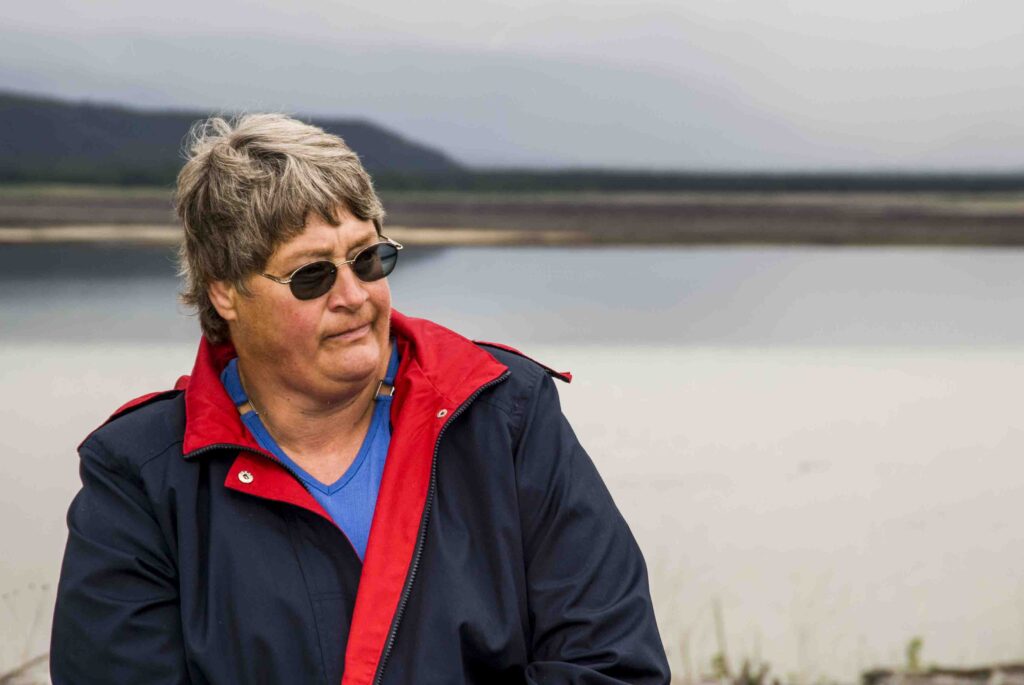
NWNL Has that changed over time?
RESIDENT We’ve heard from other people that maybe in the earlier days it flooded higher than it does today.
RESIDENT That’s right. I think it has been one foot over full pond once.
RESIDENT Maybe this year…. It has the good makings of a flood.
RESIDENT Yeah, that could happen this year.
RESIDENT I’ve got concerns too in the long term around the effect of climate change and the disappearance of glaciers, springs drying up, etc. I’ve got concerns about just how far this lake is going to be drawing down long term. I wonder what the long-term effects are going to be other than the actual levels and how far down the lake a person is going to wind up going in order to use it in ten, fifteen, twenty, twenty-five years from now. I think that’s an issue.
RESIDENT Between climate change and the effect of the lake being here, I just wonder what long-term effects will be. I wonder whether the Columbia Basin is going to look at replanting on the upper end…. Whether they are going to start to reclaim some of that land…. What they are going to do in terms of the hydro-capacity….
RESIDENT I’m concerned. Valemount is dusty as all get out right now. If that exists long term, I think there’ll be some very serious effects, including from climate change. I think this issue will affect this valley to a larger extent than it has already.
NWNL Does B.C. Hydro or any other entity have any long-term management plans in place for this area?
RESIDENT They want more power, so they’ll generate more power at Mica Dam. We don’t know if that will be by raising the dam, by adding more turbines, or other options. That was just formulated last year.
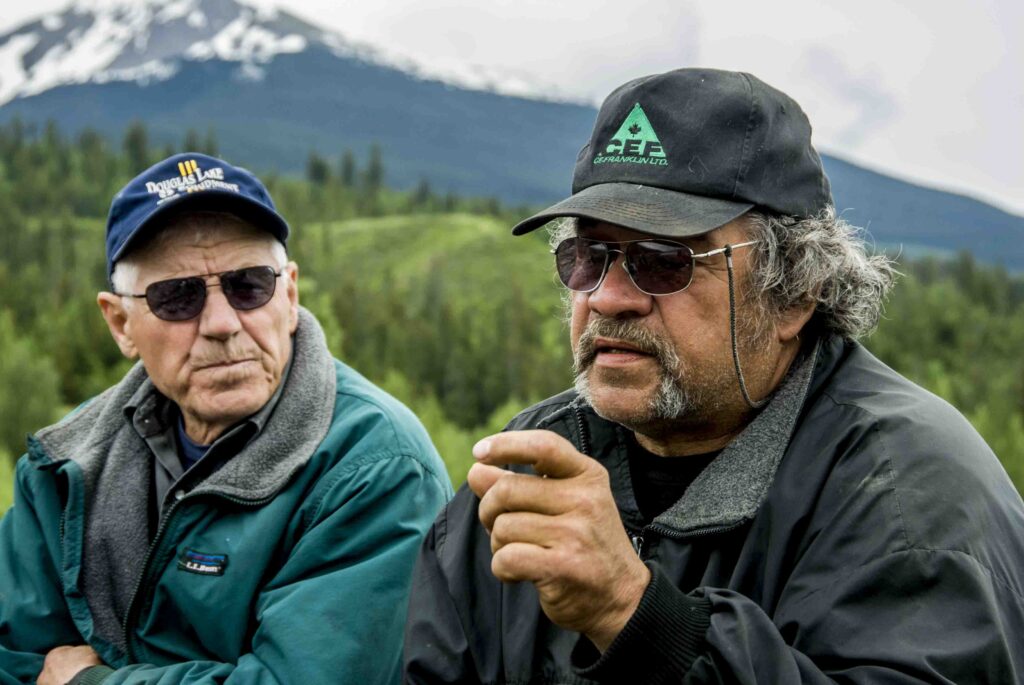
NWNL Are you in communication with other towns, communities or regions around the lake to coordinate concerns and possible requests to B.C. Hydro about what you, as residents, want? Where can you go with local input?
RESIDENT The Marina Association seems well represented. There’s even the possibility of a direct request to B.C. Hydro. There’s also the Columbia Basin Trust. How many years will the Columbia Basin Trust continue to be funded?
RESIDENT They are supposed to be getting wealthier all the time, so it should last forever. As long as they generate power to sell, they’ll have money. Their contract expires in 2014 and it can be renegotiated then if either side chooses.
RESIDENT For whom, mainly, did we sacrifice all of this for? Americans or B.C? They are the ones who make all the money.
NWNL Who built the dams?
RESIDENT The American government built the dams. The American government paid for its downstream benefits early so the B.C. government could have the dams.
The Canadian government took the dams over in ’72 when they were complete. Two dams were built just to hold the water. Mica and Keenleyside were built for power, right from the word “go.” Now they all generate power.
RESIDENT I think when we talk about whether Mica Dam is good or bad, we must recognize that it serves an important function for some people. For some of us, it meant our land was expropriated. There are many people along this lake that got screwed hard and were treated unfairly. I’m not really endorsing it, but water here is important to families downstream. I’m willing to recognize that. We can discuss what’s important and why, but we can’t shut out that it has critical effects for people downstream, including whether their house could be underwater and washed away.
There are 400 dams on this system, operating at a constant level, putting their power out steadily to protect their equipment and everybody that gets this power. If these dams go, the people below are in danger. We would be in trouble up here too. We wouldn’t be flooded out, but we would be shaken because water is heavy.
NWNL And where did you learn that?
RESIDENT From several people and from reading that dams in North America tare really an ecologically unsound way to generate power, in that the weight is too heavy. The land wasn’t meant to hold that much weight – representing approximately 8.9 pounds per gallon. That means billions of gallons of water pushing down and so something will have to come up. Just because we live at the top end doesn’t mean that we’d be safe if this dam was to go.
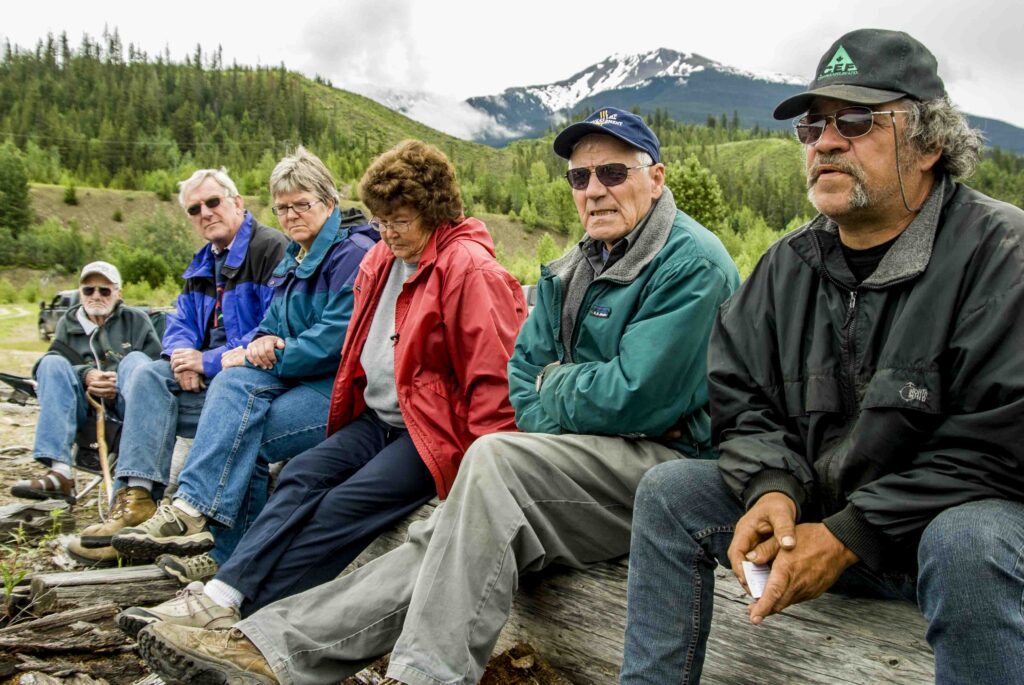
NWNL Is there any local good that has come of this dam in this area?
RESIDENT A few fish in it, but they’re not very big anymore, since here’s nothing for them to eat, and their gills fill up with silt.
RESIDENT It attracts people to come fishing.
RESIDENT It’s hard to assess when considering rich lumber industry that we lost. Many people come here; see the hills we could log; and say “Wow, this is borderline suffering. Can you even afford to put gas in the skidder to go up to get it and bring it down and around this creek?” There was some very good farmland down here too. And further down there were even berry farms.
RESIDENT I think that so much good could have happened – so looking at Valemount today (2007) in that alternate universe, it would probably be radically different. It’s hard to say. Valemount is partly the way it is here today because we have this stand here of nice cedar and spruce. There was no pine growing here. The beetles couldn’t have got it.
RESIDENT We are facing climate change – we haven’t gotten the cold weather we used to have. Since they dammed this lake, we haven’t had the 40º below that could stay 3 weeks at a time. Now we have more snow because of the winds.
NWNL Who owns this site now?
RESIDENT BC Hydro. It’s now a different company. We gave them grants to clean up the lake, but those grants ran out and they ran out. Yet there is fresh water coming in all the time.
NWNL Thank all of you for sharing your disappointments and losses. Sharing can be painful, supportive; but it might also inspire future landowners to double down to stop further destruction of critical ecosystems such as yours.
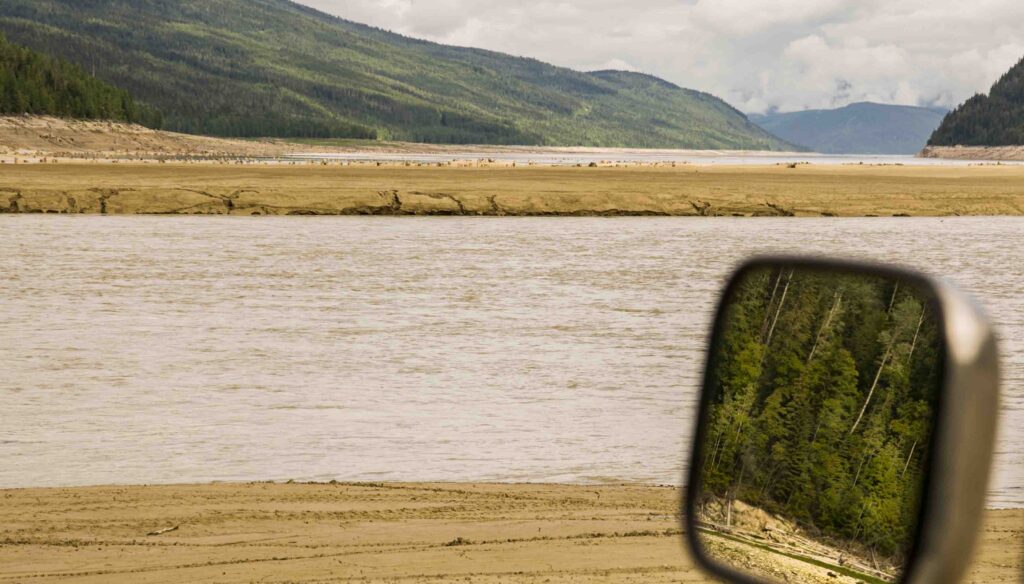
Posted by NWNL on March 21, 2024.
Transcription edited and condensed for clarity by Alison M. Jones.
All images © Alison M. Jones, unless otherwise noted. All rights reserved.
